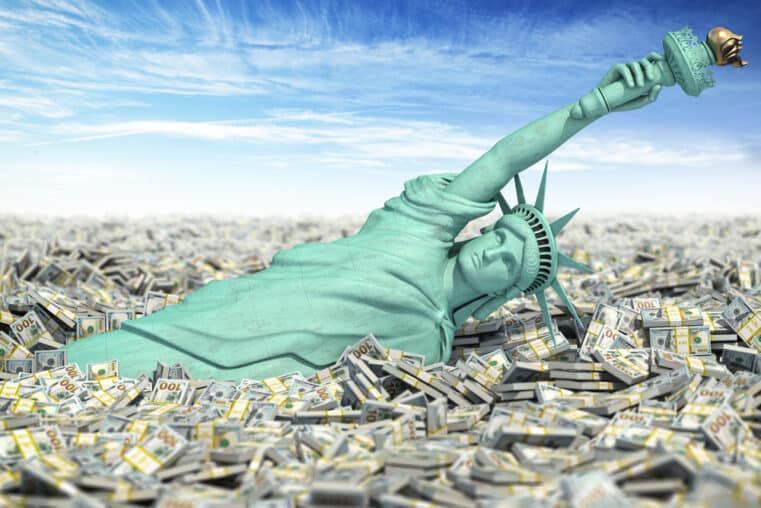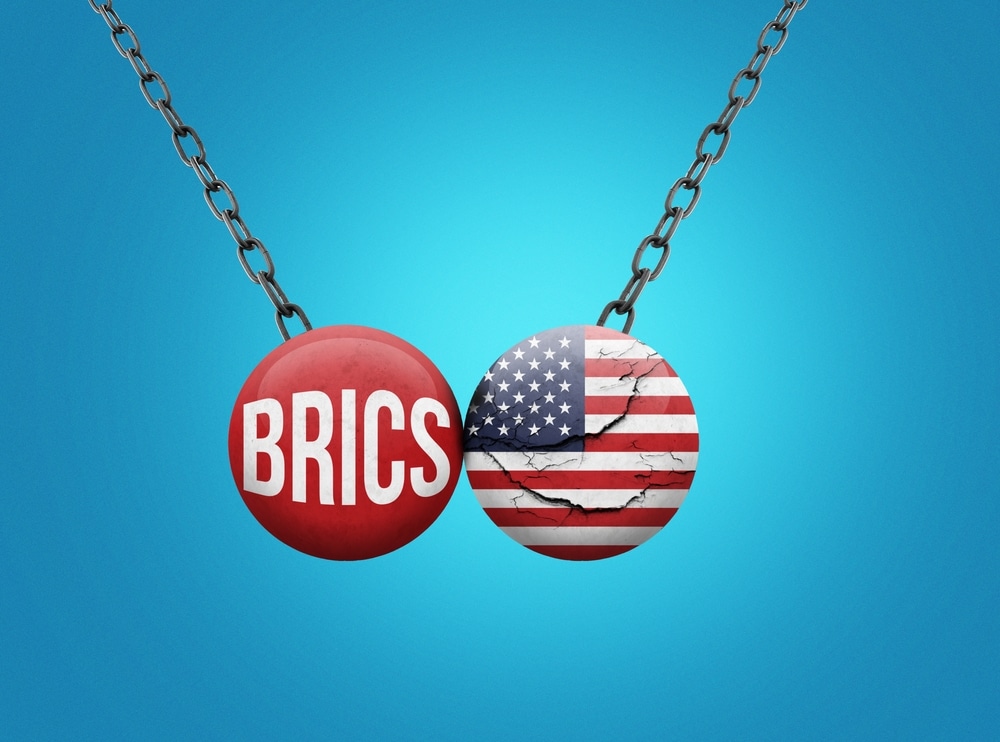
How Depositor Funds Can Be Legally Confiscated for Bank “Bail-Ins”...
In stark contrast to what took place during the 2008 financial crisis, American taxpayers will no longer be responsible for bailing out Too-Big-To-Fail banks nearing bankruptcy.
Government and taxpayer bailouts have more or less been discontinued.
Bank creditors and shareholders are now responsible for maintaining their institution’s solvency.
But there’s also some bad news associated with the new policies set in place.
Under conditions of financial strain, customers and depositors who are storing assets in a bank are “creditors” who can immediately be regarded as legitimate bank “shareholders.”
This means that a large portion of their stored funds can be converted into bank equity. To be clear, depositor funds and assets can be legally confiscated by the bank to maintain its solvency.
This is called a “bail-in,” and it affects every depositor in the US. If you are like most Americans, you too are a depositor, meaning that your funds are vulnerable to confiscation.
Since 2000, approximately 555 banks have failed. This averages to around 30 bank failures a year. Most were small banks, and none of them were bailed out.
But with government-authorized forfeitures now set in place, virtually no bank will run the risk of failure. In fact, according to the FDIC, absolutely no banks failed in all of 2018.
This places your cash, savings and checking accounts, investments, and retirement accounts such as your IRA or 401(k) at considerable risk of being converted into bank equity.
The bank essentially “owns” your money.
How Can Government Allow This to Happen to Its Citizens?
Remember the 2008 financial crisis? The mortgage crisis that triggered a global financial meltdown was eventually halted by a $1 Trillion injection of taxpayer funds to banks considered “Too-Big-To-Fail.”
Although most Americans may have grudgingly accepted this emergency measure if only because no other solution existed that would have staved off a potential depression on a global scale, a large majority of Americans were nevertheless outraged.
So banking regulators found a “better” solution: force the bank’s shareholders and creditors to absorb the bank’s losses: a bail-in.
But herein lies a contractual sleight-of-hand: if you store money in a bank, you agree to become an “unsecured creditor.” In fact, banks’ largest unsecured debts are comprised of depositor funds.
So any money you store in a bank becomes unsecured debt, making you an unsecured creditor who must then share the burden of bank losses should it face the prospect of insolvency.
And how might you share that burden? Your funds--considered unsecured debt--will be confiscated for use at the bank’s discretion.
Your funds will be seized and converted into bank equity...just like that.
Bank Seizures Across the Globe
In 2012, the Bank of Cyprus, the nation’s largest commercial bank, began to collapse along with other banks in the region.
Their government approved a measure allowing their banks to confiscate and utilize around 47.5% of all uninsured deposits.
Depositors in other Cypriot banks were not so lucky; some of them seeing as much 80% of their savings vanish under forfeiture.
The Friday before the pre-authorized confiscation, all withdrawal attempts by depositors were thwarted, all transactions frozen. The banks simply closed their doors.
By Monday morning, many depositors woke up to find that a significant portion of their money was gone! In its place were equivalent shares of bank stock.
Depositors were forced to accept shares of stock in a failing bank in exchange for their own money.
This deceptive bail-in was tantamount to theft but in legalized form.
What most people don’t know, however, is that similar practices had already happened in Greece and Ireland in 2010, and in Austria, Denmark, and Portugal in 2011.
Deceptive Clauses Within Dodd-Frank
How many Americans have actually read the legal language contained within the “Wall Street Reform and Consumer Protection Act”--the Dodd-Frank reform supposedly established to protect the average American? Hardly anyone.
Title II of the Act gives the FDIC authority to take your money via the “Orderly Liquidation Authority.”
This section of the act essentially allows the banking system to freeze your funds and take 50% or more of it in order to save the bank’s balance sheets, similar to what happened in Cyprus during their financial crisis in 2012.
No Choice in the Matter and No Legal Recourse, Your Money Becomes Fodder for the Bank’s Survival and Gain.
As a depositor (hence, unsecured creditor), you become a financial casualty in the bank’s battle to save itself.
Sure, you will receive shares of the bank’s stock, making you a shareholder.
But if you had a choice, would you have purchased shares in a failing institution?
You likely would not have done that. The regulators know that. And that’s why they have decided to do it for you, through legal means to which you have no recourse.
How You Can Protect Your Money From This “Legalized” Theft?
Financial calamities come in many different forms. But most of them are centered on massive debt obligations that cannot be met.
Personal debt is something that can be more or less controlled. But institutional debt large enough to trigger a systemic crisis--such debt is beyond the average American’s control.
Yet institutions have made it such that the average person is now “responsible” for obligations that “they” have initiated, perhaps carelessly.
So how can you protect yourself from something that is not only beyond your control but intentionally stacked to your disadvantage?
The answer is simple: make your funds inaccessible, resistant to tracking, and immune to manipulation.
In short, convert a good portion of your money, IRA, or any other savings you have into hard assets like physical gold or silver.
Physical Gold and Silver Are the Best Forms of Financial Insurance You Can Ever Have
- Gold and silver can protect you from extreme market swings.
- Gold and silver can protect you from a stock market crash.
- Gold and silver can protect your purchasing power from the erosive effects of inflation.
- Gold and silver can protect you from currency devaluations.
But more importantly…
PRIVATE NON-CUSIP GOLD AND SILVER CAN NEITHER BE TRACKED NOR MONITORED.
You will always have access to your money, you can choose to use it whenever the need arises because you will always maintain ownership of what rightfully belongs to you.
Three Steps to Protect Yourself, Your Wealth, and Your Financial Future
- First step: contact one of our IRA and asset protection representatives at GSI Exchange. We can help you decide on a precious metals portfolio and retirement strategy appropriate to your financial situation, goals, and risk tolerance.
- Second step: ask as many questions as you believe necessary to ensure that your portfolio allocations and purchases are the most competitive and most appropriate for your situation.
- Third step: begin protecting your wealth by purchasing physical gold and silver. Remember that bank seizures are not announced prior to implementation. And the best insurance policy is to be prepared beforehand.
When the Orderly Liquidation Authority is enacted, the confiscation and conversion of your bank deposit will be swift, leaving you with no access to your money and no legal recourse to getting your money back.
Preparation is key, act today!











